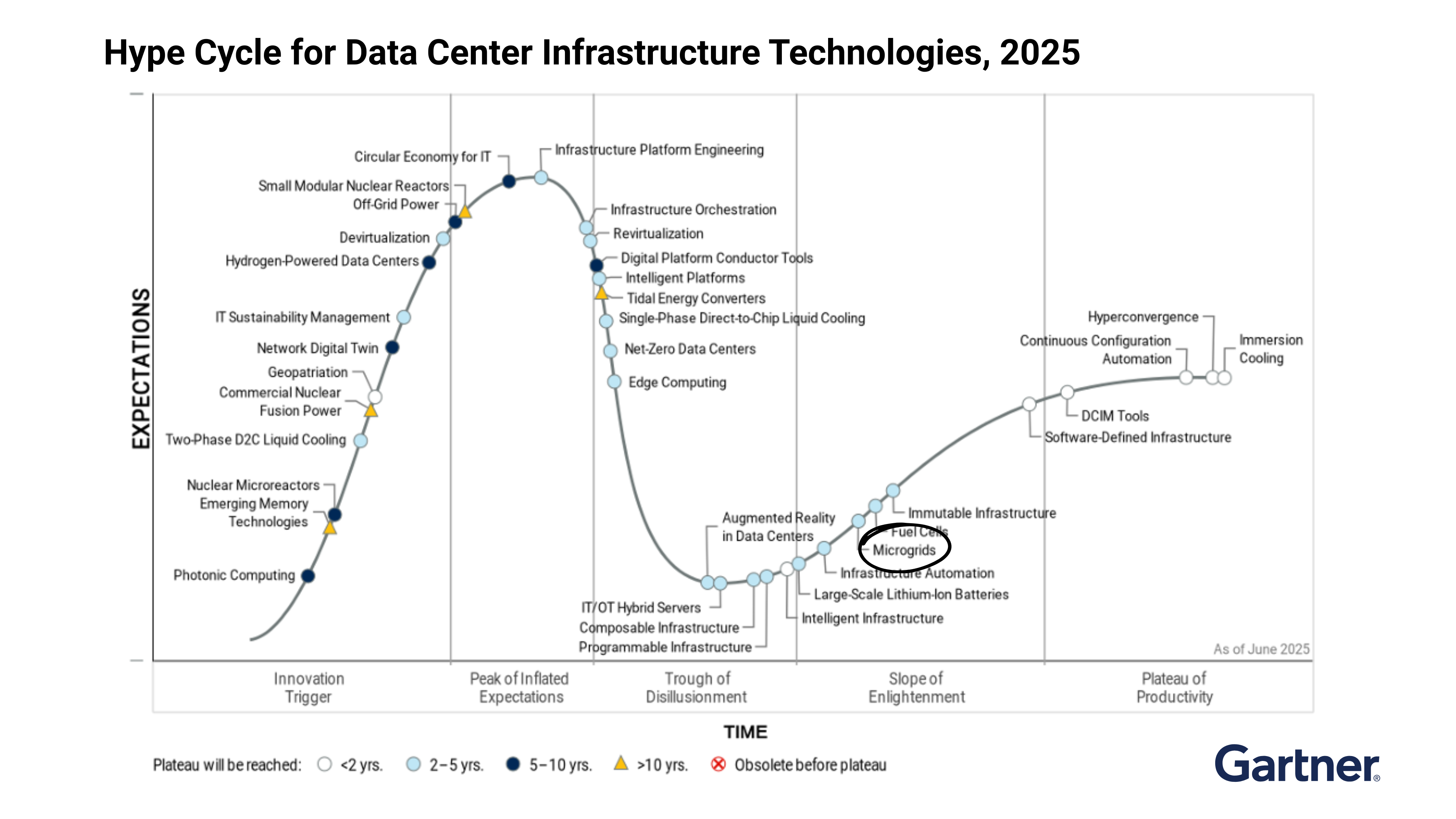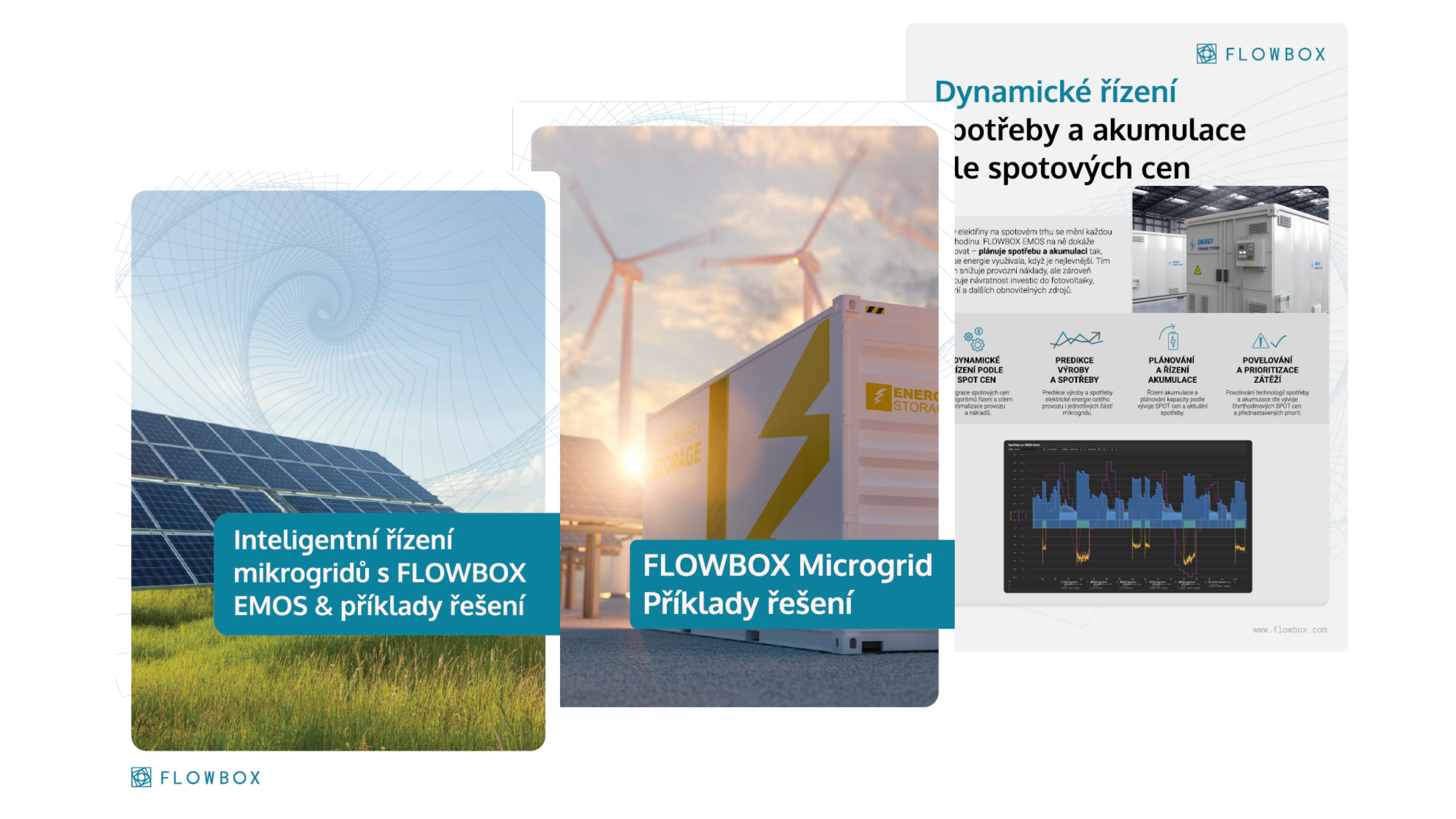Why Microgrids Are Becoming Critical in Data Centers
Today’s data centers face increasing demands for computing power, security, sustainability, and resilience to outages. According to Gartner, energy consumption in this sector is expected to more than double by 2030, largely driven by power-hungry workloads such as artificial intelligence and high-performance computing (HPC).
In response to these pressures, microgrids are emerging as a strategic solution. They enable data centers to:
- Increase energy self-sufficiency and reduce dependence on the central grid
- Better manage peak loads and minimize power outages
- Optimize their carbon footprint and meet ESG targets
- Lower operational costs through efficient energy management
The Gartner Hype Cycle for Data Center Infrastructure Technologies 2025 identifies microgrids as a high-benefit technology, and lists FLOWBOX as one of the key solution providers bringing them into practical use.

What Gartner Says About Microgrid Technologies in Data Centers
One of the key themes in the report is microgrids — small, self-contained power systems that can operate autonomously or in conjunction with the main grid. Gartner classifies them as high-benefit technologies already moving into the early mainstream phase.
According to Gartner, microgrids enable organizations and communities to:
- Improve resilience to outages and disruptions
- Reduce energy costs
- Increase energy independence
- Actively manage energy consumption
- Integrate renewables and battery storage more effectively
FLOWBOX as a Recognized Microgrid Vendor
FLOWBOX is listed in the report alongside companies like ABB, Siemens, and Schneider Electric as a vendor successfully deploying microgrid solutions.
The FLOWBOX platform offers more than just data collection and analysis. It enables autonomous control of energy production, consumption, and storage in real time. It supports predictive management, remote monitoring, and scaling across sectors — from industrial operations to public infrastructure.

Specific examples of how FLOWBOX is used in microgrid deployments:
- Microgrid monitoring and supervision – including data collection from production, consumption, and power flows to enable predictive actions
- Predictive control and planning – optimization of solar, battery, and microgrid operations based on data forecasts
- Solar overflow management – effective use or market sale of excess self-generated energy
- Battery storage monitoring and control – smart battery operation to optimize lifespan and performance
- Smart EV and forklift charging – automated scheduling based on spot prices, grid status, and solar generation
You can download our brochure with detailed use cases as well.

Gartner’s Challenges and Recommendations for Microgrid Deployment
Gartner highlights six key challenges to broader microgrid adoption — along with recommendations for how to overcome them:
- Regulatory uncertainty and business models: Shift toward flexible frameworks like Energy-as-a-Service
- Technical integration: Focus on digital interfaces, standardization, and secure interoperability
- High initial costs: Leverage smart financing and public policy support
- Cybersecurity and skills gaps: Secure infrastructure and data, invest in workforce development
- Stakeholder engagement: Educate and involve local communities and partners
- Operational efficiency: Use AI, predictive analytics, and automation for streamlined management
Conclusion
Microgrids are more than just a trend — they are becoming a core component of resilient, efficient, and sustainable infrastructure. Gartner confirms their growing importance, and FLOWBOX is among the companies making this transformation a reality.
Curious how a microgrid could work for your organization? Get in touch. We’ll show you what’s already possible today.




